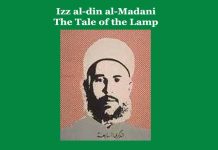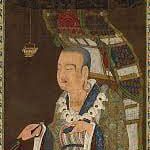Zakariyya Tamir | A Lonely Woman | An Analytical Study
Zakariyya Tamir | A Lonely Woman | An Analytical Study
Aziza was a married woman but she was neglected by her husband. She often quarrelled with the family members of her husband. Being negligent, her husband was about to marry another woman. She got disappointed and wanted to debar her husband from marrying another woman. So she went to a man named Sheik Said. Sheik Said was a man of evil intention. He took the chance to beguile her. Sheik Said said, ”Do you want your husband to return to you?”
“I want him to return to me,” Aziza replied.
He said that she has been bewitched by one of her cousins and said more that his magic spell would require ten pounds’ worth of incense to get rid of the effect.
Sheik Said told her that he has some jinn under his control who would take away all the magic spells from her and then she would get her husband back.
Sheik Said took her to the inner room where he, in the name of treatment, mesmerized her and seduced her. There she became the victim of his lust and lost her chastity.
Thus the author portrays how a naive and illiterate woman was beguiled and seduced by an adulterous wicked man.
There are two main characters: Aziza and Sheik Said. Aziza is the heroine. She was a beautiful girl with a fear of black cats. She had a buxom body and was attractive to look at. The story-teller has portrayed her as a type of superstitious village woman. When she came to know that her husband was about to marry another woman from the village, she became disheartened. She went to Sheik Said who pretended to help her in getting her husband back. For the treatment, she had to pay him ten pounds. But eventually, she became the victim of the lust of Sheik Said.
The second character of the story is Sheik Said. He is a lustful wicked man who claimed to have the magic power of healing women from a magic spell. He beguiled the illiterate village women and seduced them.
In the description of the story there is a good deal of sensuality as under:
“My brothers, the jinn, hate the light and love darkness because their houses are underground.”
Outside, the day was like a white-skinned woman. The sun’s yellow rays burned down on the streets and fused with the murmur of the crowds. Sheikh Said’s room, however, was dark and quiet.
“My brothers, the jinns, are kind. You’ll be lucky if you gain their love. They love beautiful women. Remove your wrap.” Aziza took off her black wrap, revealing her buxom body, enveloped in a tight dress, to Sheikh Said. The Sheikh started to read from a book with yellow-stained pages in a low, mysterious voice. After a while, he said: “Come closer … Lie down here.”
Aziza lay down near the incense dish. Sheikh Said put his hand on her forehead while he continued reciting strange words. Suddenly, he said to Aziza: “Close your eyes. My brothers, the jinns will arrive shortly.”
Aziza closed her eyes and the Sheikh’s voice rose, in a harsh commanding tone: “Forget everything.”
The Sheikh’s hand touched her smooth face. She remembered her father. The Sheikh’s hand was rough and had a strange smell. It was a big hand, no doubt with many wrinkles. His voice, too, was strange. it rose gradually in the quiet with its dust-coloured walls.
The Sheikh’s hand reached Aziza’s neck. ……. He never once attempted to caress her neck with tenderness. Instead, his clawing fingers would grope the flesh of her thighs.
The Sheikh placed both his hands on her. His hands gently ran across her full breasts, and then moved down along the rest of her body, only to return once more to her bosom. …..”
In narrating the story the author has employed the narrative method and narrates his story in the third person.
The Structure of the story is a logical one. There are a curious opening, climax and denouement. The opening shows that Aziza is going to be the victim of Sheik Said. When she was taken to the dimly lighted room with the smell of incense then the story reaches its climax and the rest portion of the story works as a denouement.
The Setting of the story is fine and realistic. The author has succeeded to create a mesmerizing situation as he narrates:
Sheik Said got up and closed the black curtains in front of the two windows overlooking the narrow winding alley. Then he came back and sat in front of the copper dish in which the embers were flowing over smooth white ashes. He threw in some more incense and said:
”My brothers, the jinns are kind. You’ll be lucky if you gain their love. They love beautiful women. Remove your wrap… “
The author has proved himself to be an able creator of dialogue. His dialogues are sparing, direct and purposeful. For example, we can cite the following conversation between Aziza and Sheik Said:
The sheikh grinned and said, “You will lose a little, but you will regain your husband., Do you love him?”
Aziza angrily muttered under her breath: “No, I don’t.”
“Did you have a fight with him?”
“I quarrelled with his family.”
“Does your chest feel tight?”
“I sometimes feel as if I have a heavy weight on my chest.”
The author expresses his philosophy of life in the story indirectly that illiteracy is a curse; it leads people to suffering.
The Language of the story is simple and easy. The author Zakariyya Tamir has employed some creative similes as:
“… the day was like a white-skinned woman.”
“His eyes were jet black and fiery.”
In maintaining the Qualities of a good short story as —unity of purpose, brevity, spontaneity and universality the author has succeeded praiseworthily.
In brief, to say, this present short story, ‘A Lonely Woman’ by Zakariyya Tamir, a Syrian story-teller is a fine specimen of an Arabic short story that brings about the theme of social evil like superstition and suffering of women in the male-dominated society. The characters are typed with a bit touch of individuality. The dialogues are sparing, the setting is realistic and the structure is logical which meets all the qualities of a good short story. 0 0 0
Zakariyya Tamir | A Lonely Woman | An Analytical Study
Read More: Izz al-din al-Madani Short Story ‘The Tale of the Lamp’-An Analytical Study
Zakariyya Tamir | A Lonely Woman | An Analytical Study
N. B. This article entitled ‘Zakariyya Tamir | A Lonely Woman | An Analytical Study’ originally belongs to the book ‘Analytical Studies of Some Arabic Short Stories‘ by Menonim Menonimus. Zakariyya Tamir | A Lonely Woman | An Analytical Study
Books of Literary Criticism by M. Menonimus:
- World Short Story Criticism
- World Poetry Criticism
- World Drama Criticism
- World Novel Criticism
- World Essay Criticism
- Indian English Poetry Criticism
- Indian English Poets and Poetry Chief Features
- Emily Dickinson’s Poetry-A Thematic Study
- Walt Whitman’s Poetry-A Thematic Study
- Critical Essays on English Poetry
- Tawfiq al-Hakim’s Novel: Return of the Spirit-An Analytical Study
- Tawfiq al-Hakim’s Novel: ‘Yawmiyyat Naib Fil Arayaf’-An Analytical Study
- Analytical Studies of Some Arabic Short Stories
- A Brief History of Arabic Literature: Pre-Islamic Period …
Related Searches:











